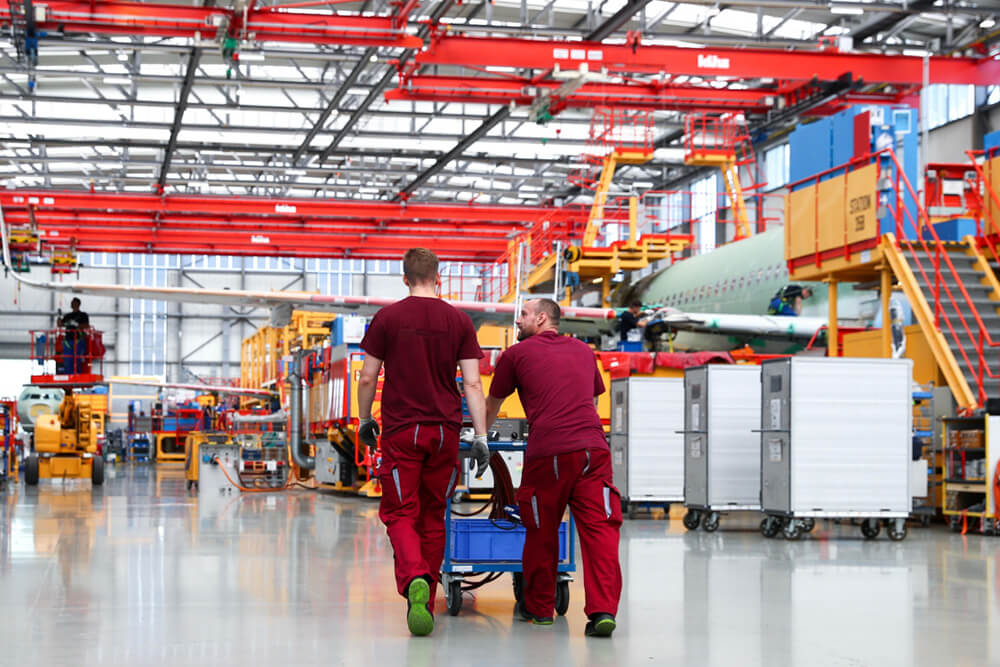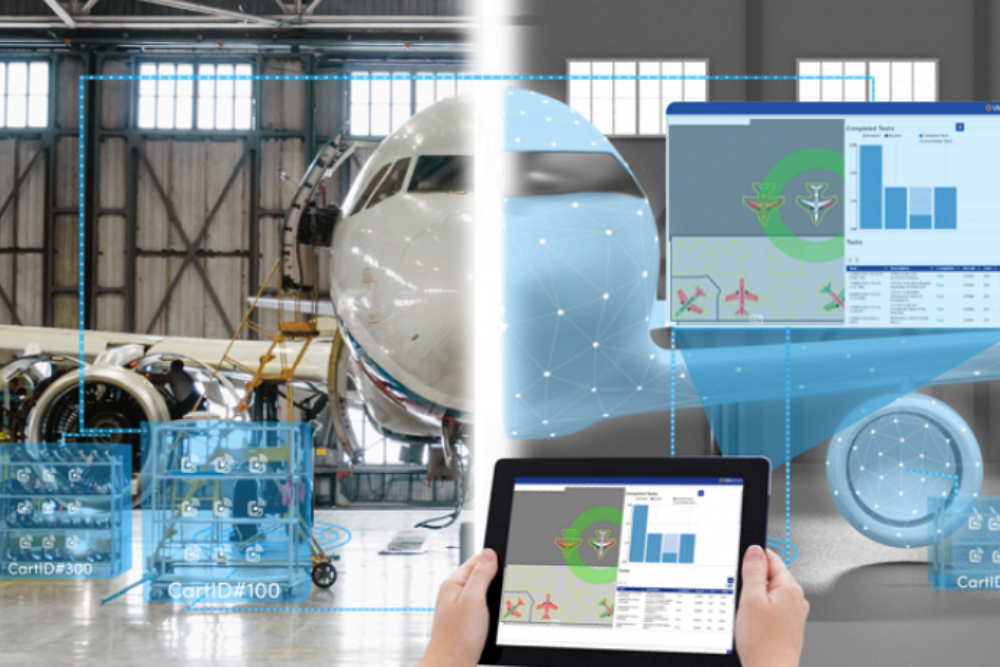June 2023 • 10 min read
How UWB is Taking Over The World: Exploring the Many Uses of Ultra-Wideband

Ultra-Wideband (UWB) technology has rapidly gained momentum and is poised to transform industries across the globe. With its exceptional precision, range, and data transfer capabilities, UWB has opened up new avenues for innovation and revolutionized various sectors. This article delves into the cutting-edge applications of UWB technology and its profound impact on industries worldwide.
Understanding UWB Technology
Ultra-Wideband (UWB) is a wireless, short-range technology that operates by transmitting low-power radio waves at incredibly high transmission rates—measured in signal/nanoseconds. This unique capability allows UWB to precisely locate objects in real-time, a feature that sets it apart from other wireless technologies.
To function effectively, UWB requires two UWB chip-enabled devices: one serving as the transmitter and the other as the receiver. This setup enables the accurate and efficient exchange of data, making UWB a powerful tool for a variety of applications.
Applications and Impact
The remarkable precision and efficiency of UWB technology are unlocking new possibilities across multiple industries. From enhancing security systems to improving smart home devices, UWB is at the forefront of technological advancement, paving the way for innovative solutions that meet the demands of an increasingly connected world.
In summary, UWB technology is not just a breakthrough in data transfer but a catalyst for change, reshaping how industries operate and interact with technology. As it continues to evolve, UWB stands as a testament to the power of innovation and its potential to transform our future.
Key Components of UWB Technology
- UWB Chip-Enabled Devices: To utilize UWB technology, you’ll need two devices equipped with UWB chips. These act as the backbone of the system—one as the transmitter and the other as the receiver.
- High-Speed Transmission: UWB operates by sending out radio signals in mere nanoseconds, which empowers it to determine the exact location of a UWB-enabled object in real-time.
- Real-Time Precision: The interactions between the transmitter and receiver allow UWB technology to pinpoint the object with remarkable accuracy, far surpassing traditional wireless technologies.
With these elements in play, UWB serves as an excellent solution for applications needing precise spatial information, be it in smart home ecosystems or advanced security systems.
Some key considerations:
1. UWB in Indoor Positioning and Tracking
One of the most significant advancements in UWB technology is its role in indoor positioning and tracking systems. UWB-based solutions (including Ubisense’s Dimension4 technology) can offer centimeter-level accuracy, enabling precise location tracking in complex indoor environments. Companies like Apple have leveraged UWB to develop their U1 chip, which powers features like spatial awareness and seamless device connectivity. This technology enables users to locate and interact with nearby devices or objects effortlessly, revolutionizing the way we navigate indoor spaces.
2. UWB in the Automotive Industry
The automotive industry has embraced UWB technology to enhance safety, convenience, and efficiency.
UWB-enabled keyless entry systems allow for secure and convenient vehicle access, eliminating the need for physical keys. Beyond automotive applications, Ultra Wideband technology transforms secure access control systems with its precise ranging capabilities.
Enhanced Security Measures
- Authorized Access: UWB ensures that only authorized individuals gain entry to secure areas, effectively addressing security challenges in environments like offices and residential buildings.
- Proximity Detection: The technology determines the exact proximity of a user’s device to secure doors or entrances, offering an extra layer of security not available with traditional systems.
Comparative Advantages
- Beyond Traditional Technologies: Compared to BLE and RFID, UWB provides superior security by accurately monitoring who is permitted entry, reducing risks associated with unauthorized access.
This blend of convenience and heightened security makes UWB an ideal choice for modern access control needs across various settings.
Additionally, UWB-based solutions facilitate vehicle-to-vehicle communication, enabling cars to exchange data in real-time for collision avoidance, cooperative driving, and traffic optimization. UWB’s high precision and resistance to interference make it an ideal technology for creating a connected and intelligent transportation ecosystem. To learn more about how UWB is being used in auto manufacturing, please click here.
3. UWB in Asset Tracking and Management
UWB technology has revolutionized asset tracking and management in industries such as logistics, manufacturing, and warehousing. UWB-based tracking systems provide real-time visibility into the location and status of assets, equipment, and inventory. This enables companies to optimize their supply chain operations, reduce inefficiencies, and mitigate losses due to misplaced or stolen assets. UWB’s accuracy and scalability have made it a game-changer for industries that rely on efficient asset tracking.
4. UWB in Healthcare and Wearable Devices
The healthcare sector is experiencing a transformational shift with the integration of UWB technology. UWB-enabled wearables can track vital signs, monitor patient movements, and provide remote healthcare services. For example, UWB-based systems allow healthcare professionals to monitor patients’ conditions in real-time and respond promptly to emergencies. This technology is particularly valuable in elderly care, where it improves safety and enables independent living while ensuring timely assistance.
5. UWB in Robotics and Automation
UWB is also driving advancements in robotics and automation. UWB-based localization systems enable robots to navigate complex environments with precision and efficiency. This allows for increased automation in industries such as manufacturing, warehousing, and agriculture. UWB-enabled robots can work collaboratively with humans, enhancing productivity, reducing errors, and improving overall operational efficiency.
6. UWB in Augmented Reality (AR) and Virtual Reality (VR)
UWB technology is playing a pivotal role in advancing the capabilities of AR and VR applications. UWB-based systems provide precise spatial mapping and tracking, enabling highly immersive and interactive experiences. By accurately sensing the position and movement of users and objects, UWB enhances the realism and responsiveness of AR and VR environments. This opens up new possibilities in gaming, training simulations, architectural visualization, and more.
7. UWB for Presence Detection
CEVA DSP, a prominent semiconductor intellectual property company specializing in digital signal processing, has introduced a notable advancement in Ultra-Wideband (UWB) technology. Their latest innovation focuses on in-cabin motion sensing and detection based on subtle breathing micro-movements.
Primarily designed for infant and pet monitoring, this radar platform offers extended battery life by incorporating presence detection into consumer electronic devices. Unlike camera-based radar technologies, this UWB solution supports low-light operation and prioritizes privacy during in-vehicle sensing. Leveraging a coherent demodulation architecture and advanced algorithms, the platform ensures reliable distance and angle measurements, enabling applications such as intruder detection and even gesture recognition.
8. UWB in Intelligent Parking
The deployment of UWB sensors in car parks or garages enables real-time detection of vehicle presence. Sensors can accurately determine the precise location of parked vehicles and send information about available parking spaces to drivers. This technology significantly reduces search time for drivers, leading to a reduction in traffic congestion. Moreover, UWB technology facilitates contactless payment options and grants control over access to parking facilities. By seamlessly integrating UWB sensors with payment and access systems, a frictionless parking experience can be achieved, benefitting drivers and optimizing overall parking operations.
Ultra-Wideband (UWB) technology offers several benefits for connectivity and data transmission, particularly in the realm of the Internet of Things (IoT).
Key Benefits of UWB Technology:
- Efficient Connectivity: UWB is designed to wirelessly connect smart devices with remarkable efficiency. It can handle the demands of a highly connected ecosystem without significant energy consumption.
- Low-Power Usage: Due to its low-power radio wave transmission, UWB ensures prolonged battery life for IoT devices. This makes it especially advantageous in environments where devices need to operate independently over extended periods.
- High Transmission Rates: One of the standout features of UWB is its ability to transmit data at very high rates. This makes UWB highly suitable for applications that require quick data transfer, ensuring seamless communication between devices.
- Short-Range Applications: UWB excels in short-range communication scenarios. It’s particularly effective for applications where devices are in close proximity, like indoor navigation systems or real-time location services.
In summary, UWB’s ability to balance low power usage with high-speed data transmission makes it an ideal choice for modern IoT applications that demand efficient and rapid connectivity.
Smart Home and IoT Applications of UWB Technology
Ultra-Wideband (UWB) technology is revolutionizing smart home and IoT landscapes with its remarkable precision and versatility. Let’s explore how UWB is being utilized:
- Location-Based Services: UWB’s precise ranging capabilities enable advanced location-based features. Imagine lights that automatically adjust when you enter or exit a room, or the ability to detect which areas are occupied. This not only enhances convenience but also optimizes energy usage.
- Asset Tracking: Misplacing items becomes a thing of the past. UWB’s tracking precision allows homeowners to pinpoint the exact location of their belongings within their living spaces.
- Seamless Connectivity: UWB enhances device communication, making it possible for all your smart devices to connect effortlessly. This results in a more synchronized and efficient home ecosystem.
- Enhanced User Experience: With wireless functionality, UWB brings a high level of personalization, enabling homes to adapt to the preferences of individual users.
UWB technology, with its ability to accurately understand spatial relationships, is driving forward the creation of intuitive and efficient smart homes, offering a sophisticated user experience tailored to modern living.
Conclusion
From indoor positioning and automotive advancements to asset tracking, healthcare, robotics, and AR/VR applications, UWB is revolutionizing the way we live, work, and interact with technology. With its unmatched precision, range, and data transfer capabilities, UWB is taking over the world, unlocking a future where connectivity, efficiency, and innovation thrive.
Share This Story, Choose Your Platform!
HEAD OFFICE (UK)
Ubisense Limited
St Andrew’s House
St Andrew’s Road
Chesterton
Cambridge, CB4 1DL
United Kingdom
+44 1223 53 5170
NORTH AMERICA
8400E Crescent Pkwy
Suite 648
Greenwood Village
Denver, CO 80111
+1 720 549 7553
EUROPE
Ubisense GmbH
Klaus-Bungert-Straße 5B
40468 Düsseldorf
Germany
+49 211 2297330
Ubisense SAS
52 Boulevard De Sébastopol
75003 Paris
France
+33 1 83 79 06 81



